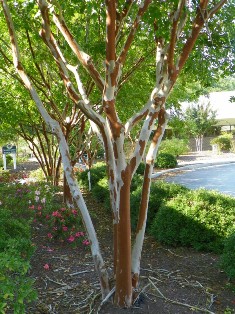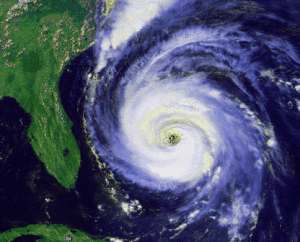Planting Trees With Hurricanes in Mind
go.ncsu.edu/readext?222973
en Español / em Português
El inglés es el idioma de control de esta página. En la medida en que haya algún conflicto entre la traducción al inglés y la traducción, el inglés prevalece.
Al hacer clic en el enlace de traducción se activa un servicio de traducción gratuito para convertir la página al español. Al igual que con cualquier traducción por Internet, la conversión no es sensible al contexto y puede que no traduzca el texto en su significado original. NC State Extension no garantiza la exactitud del texto traducido. Por favor, tenga en cuenta que algunas aplicaciones y/o servicios pueden no funcionar como se espera cuando se traducen.
Português
Inglês é o idioma de controle desta página. Na medida que haja algum conflito entre o texto original em Inglês e a tradução, o Inglês prevalece.
Ao clicar no link de tradução, um serviço gratuito de tradução será ativado para converter a página para o Português. Como em qualquer tradução pela internet, a conversão não é sensivel ao contexto e pode não ocorrer a tradução para o significado orginal. O serviço de Extensão da Carolina do Norte (NC State Extension) não garante a exatidão do texto traduzido. Por favor, observe que algumas funções ou serviços podem não funcionar como esperado após a tradução.
English
English is the controlling language of this page. To the extent there is any conflict between the English text and the translation, English controls.
Clicking on the translation link activates a free translation service to convert the page to Spanish. As with any Internet translation, the conversion is not context-sensitive and may not translate the text to its original meaning. NC State Extension does not guarantee the accuracy of the translated text. Please note that some applications and/or services may not function as expected when translated.
Collapse ▲After Hurricane Florence, fear that trees will topple onto homes and structures leads many coastal residents to remove trees from their yards, which also removes the many benefits trees bring to our communities. These include habitat for birds and wildlife, cleaner air, energy savings due to shading, higher property values, and beauty. Having a tree free yard is not necessary to protect your home. How well a tree may survive a hurricane depends on several factors, many of which are under your control. These include tree species planted, planting design, and tree spacing.
WIND RESISTANT TREES
Some tree species are better able to withstand strong winds than others. Wind resistance is especially important when planting or deciding to keep large maturing trees (over 30′), since they have the potential to cause the most damage. Studies of trees surviving hurricanes in Florida and the gulf coast found live oak, southern magnolia, and bald cypress to be the most wind resistant large trees. Other large maturing trees that proved moderately to highly wind resistant in the studies were hickory, persimmon, shumard oak, river birch, and black gum, also known as tupelo. All of these species thrive along the Carolina coast.

To minimize potential damage, plant wind resistant small trees such as crape myrtle near homes and buildings.
In addition to large trees, several species of smaller trees, maturing less than thirty feet tall, were found to withstand hurricane winds with little injury. The least damaged were dogwood, American holly, yaupon, crape myrtle, and sabal palms. Others that performed nearly as well were Japanese maple, ironwood, sweet bay magnolia, redbud, and fringe tree. These are all great species for our area and should be top choices when selecting trees to grow near homes and businesses.
Fall is the best time to plant trees in the south and many yards in our area would greatly benefit from more trees. When selecting trees to plant in your yard this fall, stay away from species that have demonstrated poor survival in hurricanes, especially when planting close to homes and structures. Weak wooded, wind damage prone trees commonly found in local landscapes include pecan, Bradford pear, Leyland cypress, lacebark elm, red and silver maple, green ash, pines, laurel and water oak, and tulip poplar.
PLANT IN GROUPS
How trees are planted can also effect their hurricane performance. Trees planted in groups, rather than as single specimens, are more likely to come through a hurricane intact and standing. A group of trees should include five or more trees growing together, each planted within ten feet of another tree but not in a straight line. When planting new trees, consider planting them as a grove, with several different types of trees grouped together. If you have existing single trees, plant additional trees and shrubs close by and mulch the entire area to create a landscape bed. This will result in a more attractive, easier to maintain, and potentially more wind resistant landscape.
ALLOW PLENTY OF SPACE
Trees with deep, wide spreading root systems are less likely to blow over. Deep soils allow trees to grow deeper, more wide spreading root systems. Common barriers to root growth found in our area include high water tables and soil compaction. Avoid planting large maturing trees where the water table or compacted layers are found within eighteen inches of the soil surface, or where the area for root growth is limited by pavement or concrete. In these areas, plant small maturing trees such as crape myrtle or yaupon.
Make sure to allow enough room for trees to mature both in height and spread. Trees that have been severely pruned are more likely to develop decay and to fail in strong winds. Once trees are planted, protect their roots from damage by keeping equipment and digging activities well away from the root zone. Maintain a construction free zone at least out to the edge of the tree canopy, further if at all possible.
LEARN MORE
If you are concerned about the health and strength of trees on your property contact a certified arborist to assess the situation. Certified arborists are highly qualified tree professionals who have passed the certified arborist exam offered through the International Society of Arboriculture. A list of certified arborists practicing in North Carolina can be found on their website, www.isa-arbor.com, under the public outreach link.
To learn more about increasing hurricane resistance in trees, visit the University of Florida’s ‘Trees and Hurricanes’ website, http://hort.ifas.ufl.edu/treesandhurricanes/, where you can find extensive information on establishing and caring for new trees, managing existing trees, and cleaning up and assessing damage after a storm.
Learn more about protecting the root system of trees during construction from this NC Extension publication: Construction and Tree Protection, https://www.ces.ncsu.edu/forestry/pdf/ag/ag685.pdf.
Visit your local Cooperative Extension office to learn more about gardening and landscape care. Go to https://www.ces.ncsu.edu/local-county-center/ to find your county Extension center.




